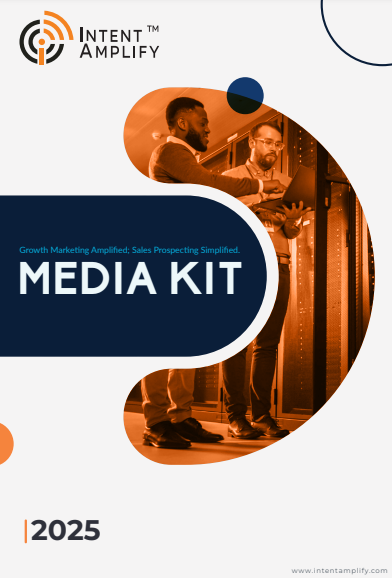
Why B2B Marketers Need Content Amplification in 2025
- Last updated on: July 10, 2025
Content amplification for B2B marketers has transformed the marketing strategies from a tactical option to a strategic need in 2025.
Creating high-quality content isn’t enough anymore. B2B buyer’s have access to multiple options with the help of digital technologies.
Marketers now have to focus on increasing content reach, engagement, and ROI through smart distribution, AI-driven targeting, and omnichannel amplification. As the marketing world becomes more competitive, content amplification emerges as the key to turning visibility into real leads and revenue.
As per Gartner, strategies like AI-based delivery, consumable data formats, and governance frameworks directly feed into amplification tactics.
Many teams still consider amplification as an afterthought. They publish high-value content and then hope for organic traction. In today’s competitive environment, this passive approach does not work. B2B buyers check six or seven pieces of content across different platforms before engaging with sales. Forrester states that these “buying groups” require consistent visibility.
This article talks about why content amplification is not optional in 2025. We’ll explore why it matters, how to execute it, and how to measure success.
The State of B2B Content in 2025
B2B content is characterized by its volume, complexity, and competition. Buyers now face not just a few vendor messages. They navigate a landscape filled with content from various sources, including peers, analysts, partners, and competitors. As a result, capturing and keeping attention has become much harder.
The change in buyer behavior adds to this complexity. Decision-making often involves entire buying groups, each with their own information needs. This fragmentation requires marketers to create content that is not only well-made but also consistently visible across different touchpoints.
According to The CMO, ungated awareness content receives up to 11 times more engagement and distribution than gated assets.
While this is happening, the adoption of AI in marketing processes has gained further momentum. AI has facilitated more personalization in creating as well as delivering content, but has also helped spawn shorter attention spans and an even higher standard for being relevant. To be as useful, marketers now have to couple smarter content with smarter amplification techniques.
In short, today’s B2B marketers are facing three fundamental challenges:
- Content saturation across all channels
- More broken and multi-stakeholder buyer journeys
- Dropping organic reach in a saturated digital landscape
It’s not simply a matter of creating more content to overcome these challenges. It takes a conscious and long-term commitment to amplification that gets valuable content to the right people, at the right time, through the right channels.
What Is Content Amplification?
In the modern B2B economy, amplification of content is critical. It is not an additional marketing task. It involves purposely amplifying a piece of content’s reach, frequency, and influence on multiple owned, earned, and paid media channels. Unlike distribution, amplification is a programmed, multi-channel initiative. Its aim is to ensure that high-value content reaches the right individuals consistently at all points in the buyer journey.
In practice, B2B content amplification can be divided into three main execution modes:
Organic Extensions
Use free channels such as:
– SEO and on-page optimization
– Employee and partner sharing programs
– Content syndication across trusted platforms
– Earned media and thought leadership features
Paid Boosts
Spend on paid distribution to increase exposure, using:
– Sponsored social posts (e.g., LinkedIn, X)
– Display ads and retargeting campaigns
– Native advertising on content hubs
Collaborative Efforts
Increase reach and credibility through:
– Influencer and subject matter expert (SME) partnerships
– Co-branded content with strategic partners
– Account-Based Marketing (ABM) campaigns targeting key stakeholders
It is essential that amplification is done right from the start of content planning, not as an afterthought post-publication. A good amplification strategy links every piece of content to the appropriate distribution channels based on intent and where the audience is at in the funnel. For instance, publishing a whitepaper can go hand in hand with a corresponding blog post, a LinkedIn carousel, an email program, and targeted paid media for re-marketing.
This organization level provides constant visibility within disjointed buyer journeys. This is essential in the 2025 digital world.
Forrester believes that B2B buying groups interact with 3 to 7 pieces of content on various platforms before they purchase. This further emphasizes the requirement for constant and strategic amplification.
For amplification to be effective, it has to suit both the type of content and the stage of the buyer’s decision:
– Awareness content: Open access; widely distributed to draw attention
– Consideration content: Selective gating or audience segmentation; utilized to educate and qualify
– Decision-stage content: High-end gated content like analyst reports or case studies; created to seal conversion
In short, content amplification is not a single tactic but a repeated strategy. When executed properly, it makes sure that content assets yield measurable business results by repeatedly sitting in front of the right stakeholders.
Key Content Amplification Channels
Key Channels for Content Amplification
Successful amplification demands a channel-specific approach supported by audience behavior and content type. The below platforms form the heart of content delivery for B2B marketers in 2025:
-
LinkedIn (Organic and Paid)
LinkedIn is still the lead network for reaching B2B audiences in the U.S. Employee-sharing and sponsored/ promoted content increase visibility and credibility throughout the funnel.
-
Content Syndication
Syndication sites like TechTarget and NetLine enable marketers to push gated content. The content is presented to a qualified audience, both increasing reach and preserving lead quality.
-
Email and Newsletters
Segmented email campaigns and newsletters ensure consistent touch points. They allow for targeted delivery of content specific to specific buyer personas and funnel stages.
-
Retargeting and Programmatic Advertising
AI-powered retargeting and programmatic ad platforms increase reach for top-performing content by re-engaging site visitors with applicable assets through digital channels.
-
Influencer and Partner Collaborations
Industry influencer and strategic partner collaborations expand reach and amplify credibility when content is co-branded or shared through trusted voices.
-
Employee Advocacy
Internal teams may amplify brand content using personal networks. Employee advocacy expands reach while making brand communication more relatable on social and professional networks.
All of them should be aligned with content type and stage of the buyer. For example, case studies and testimonials come in handy for decision-making, whereas infographics and blogs are suitable for early awareness.
Strategic Amplification Along the Buyer Journey
Successful content amplification starts with a strong understanding of the buyer’s journey. By 2025, B2B buying is no longer linear, it is multi-stakeholder buying groups with varying informational requirements at differing stages of engagement. To be effective, amplification needs to be aligned with the buyer’s journey, timing the right content and channel to the right moment.
Following is a step-by-step analysis of how amplification strategies can aid pipeline progress and conversion:
Content amplification plays a critical role in maintaining steady engagement and pipeline progression. Distribution and content relevance guarantee consistency toward resonance at all touchpoints. It must align with every step of the B2B purchasing journey.
Awareness Stage
The goal at this stage is to drive initial brand awareness while using high-value ungated content to engage prospective buyers without pushing a sales agenda.
LinkedIn facilitates the promotion of blog posts, infographics, and other forms of thought leadership content on a larger scale.
Through TechTarget and similar platforms, top-of-funnel content can be further distributed, helping reach new audiences.
Publish educational content through newsletters to establish your brand tone and share expertise.
Consideration Stage
Shoppers are seeking solutions and answers and comparing features in pairs. Amplification needs to differentiate through value-based content that addresses a particular pain point in order to educate.
Send webinars and white papers via role-based email campaigns based on the level of the buyers.
Retarget visitors using mid-funnel ROI guides or product comparison reports.
Leverage LinkedIn sponsored content to share case studies and encourage more engaging interactions.
Decision Stage
At this point, focusing on minimizing risk is the key. Amplified content should then be presenting social proof, quantifiable value, and endorsements from authoritative figures.
Industry influencers and brand advocates help to extend the reach of customer testimonials and success narratives through trusted third-party validation.
Plan to reach executive-level decision-makers through targeted paid ad with analyst reports, peer product reviews visibility, etc.
Use targeted emails with ROI calculator and pricing details to engage those leads.
The purchasing journey coupled with carefully considered content amplification is crucial.
Many B2B marketers invest in great content but neglect important operational errors that top its reach and performance. Erro
The next section summarizes the most common mistakes and how to avoid them.
Common Mistakes to Avoid in B2B Content Amplification
Even when B2B content strategies are executed with precision, the outcome can be very different than intended if amplification is poorly managed. In a competitive digital world, it’s essential to go further than just topic selection. Below are some of the most common mistakes marketers should proactively counter:
- Treating Amplification as an Afterthought
Not factoring amplification into the content calendar results in loss of viable avenues for distribution. An asset that has the potential to perform exceptionally well must have a deployment strategy, and release needs to go beyond just clicking “publish.” Treat it similar to a military operation—no solo improv allowed.
- Over-Reliance on a Single Channel
Putting all your eggs in one basket such as email or LinkedIn will limit audience reach and won’t engage potential buyers. Businesses harnessing multi-channel amplification will reach diverse buyer personas and their online behavior patterns.
- Underfunding Paid Distribution
Paid content, sponsored tweets, and other paid avenues have become an inseparable part of the marketing ecosystem. With notoriously increasing competition for organic reach, failure to allocate a budget for these channels, even the highest quality of content produced will still go largely unseen.
- Inconsistent Messaging Across Channels
While tone and format may shift per platform, the core message should remain clear and cohesive; getting misaligned per channel weakens brand authority.
Conclusion & Next Steps
B2B content amplification is no longer an afterthought in a strategic sense. Given broken buyer journeys and dwindling attention spans, amplification ensures people see, remember and take action on your message.
The numbers back it up: ungated awareness content can achieve up to 11x distribution, and more selective gating at mid-funnel assets resulted in higher quality leads by more than 40% (Forrester, 2025). These are not small boulders – these rocks are the switches to competitive advantage.
Review the existing content strategy to ensure each asset has its own unique amplification & distribution.
FAQs
1. How do you know when a B2B content amplification strategy is successful?
Chief metrics are reach of content, engagement rates, click-throughs, lead quality, conversion rates, and pipeline influence. Attribution modeling and performance measurement across channels are essential to measure ROI.
2. What are some common pitfalls in B2B content amplification?
Errors are treating amplification as an afterthought, overreliance on one channel, underinvestment in paid promotion, and mixed messaging between channels. These errors can minimize reach and decrease ROI.
3. How does AI influence content amplification for B2B marketers?
AI improves amplification with predictive targeting, content optimization, and intelligent scheduling. In 2025, AI also assists in analyzing performance and dynamically optimizing content delivery to engage buyers better.
4.What is content amplification in B2B marketing?
Content amplification for B2B marketers is the strategic placement of content on paid, owned, and earned media to reach, engage, and drive ROI to the fullest. It’s not just sharing—it’s about delivering content consistently to the right people at each step of the buyer’s journey.
5. How does content amplification differ from content distribution?
Distribution emphasizes pushing content a single time, whereas amplification is about repeated, calculated promotion across numerous touchpoints. Amplification is continuous, data-based, and customized for every step of the buyer journey.
Going into 2026, amplification will evolve with AI-powered dynamic content delivery and hyper-targeted buyer-group orchestration.



